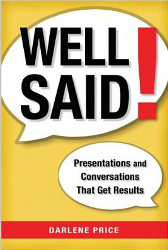
|
The presenter's confidence is the cornerstone of a great presentation or conversation. A good presentation contains three basic components; namely, Clarity, Credibility, and Confidence.
In addition to the highlighted parts on how to seize opportunity to persuade decision makers, this book also contains techniques, exercises, guidelines and checklists which you are worth reading.
This book provides a systematic approach to enhancing one's presentation skills under the following major topics :
| Developing Persuasive Content |
(P.37 - 88) |
| Mastering a Confident, Dynamic Delivery Style |
(P.89 - 164) |
| Seizing Every Opportunity to Persuade Decision Makers |
(P.165 - 181) |
|
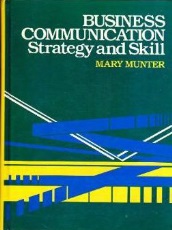
|
Discussion skills for meetings are one of the essential skills that students must master. The chapters of this book create neatly "parceled packages" relating to discussion skills for meetings which are applicable to many contexts including general meetings, tutorials, and seminars. In particular, chapter 14 has a lot of useful skills including :
| How to Communicate Effectively in Meetings |
(P.348) |
| Participating in Meetings |
(P.349 - 350) |
| When and How to Answer Questions |
(P.357 - 359) |
| How to Tackle Difficult Questioners |
(P.360 - 361) |
| Anticipate Questions, Plan Your Responses, Analyze Two Audiences, State Your Main Points, Use Good Nonverbal Communication |
(P.363 - 367) |
| Review Questions, Application Questions, and Cases for Practicing what you have Learnt |
(P.367 - 370) |
|
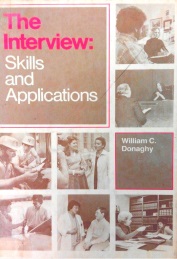
|
Despite the fact that this book was published in the 80's, it contains rich content full of in-depth analysis of interview skills that you will find interesting. It focuses on psychological aspects, dynamics, and the flow of talk during interviews. For instance, the part on classification of interviewers helps a lot in preparing for different responses during interviews. The second part has various types of leading questions, probing questions; and how interviewees tackle these questions one by one. A sample job analysis form has also been provided which reveals the truth of how interviewers examine interviewee's job descriptions and their job performance in the past. This enables readers to reflect upon their previous interview performance in great detail. The highlighted parts are as follows :
| Types of Interviewee |
(P.80 - 84) |
| Types of Interviewer – From Interviewee's Perspectives |
(P.85 - 88) |
| Role Play Activity |
(P.94 - 95) |
Types of Questions Phrasing:
- Leading Questions
- Probing Questions (Amplification, Clarification and Confrontation)
|
(P.108 - 113)
(P.129 - 144)
|
| Obstacles to Listening and How to Improve Listening Skills |
(P.154 - 171) |
| The Selection Interview |
(P.245 - 285) |
|
Sample Job Analysis Form (which reveals how interviewers explore
interviewee's job descriptions and job performance)
|
(P.248) |
| Sample Selection Interview Guide |
(P.270) |
| Sensitive Questions and Their Alternatives |
(P.276) |
Activities :
- Analyze the Selection Interview
- Role Play
|
(P.280 - 283)
(P.284 - 285)
|
|
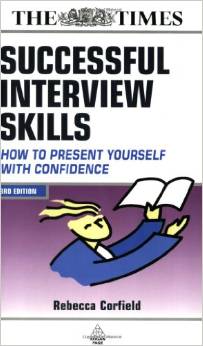
|
The author skillfully guides the reader through a simplified and effective approach in introducing successful interview skills. The book illustrates ways that the interviewee can effectively sell themselves to the interviewer through a handful of sophisticated presentation skills. Some sample answers are framed in an interview scenario in the last chapter to help readers tackle both the usual, and tricky situations for the purpose of testing the interviewees. The book contains the following parts which are worth reading :
|
Making a Presentation |
(P.21 - 28) |
Planning & Preparation
- Sell Yourself, Areas of Likely Questioning
- Sharing the Vision
- Covering weaknesses and Maximizing Strength(s)
- Golden Rules on Attitudes and What to Talk About
- Which Questions to Ask
|
(P.31 - 42) |
| Creating the Best Impression |
(P.43 - 57) |
| Answering Interview Questions |
(P.65 - 84) |
| Dealing with Tricky Situations |
(P.85 - 89) |
|
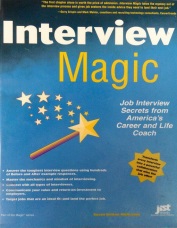
|
This book has been presented in a user-friendly way and readers will find it useful and effective. It looks into what traits of competence are generally needed by employers, and it also guides readers through the creation of 'chemistry" with the potential employer during the interview. Some useful reminders and tables are occasionally provided to help readers prepare for their interviews. The book contains the following parts which are worth reading :
| 10 QuickTips for Capturing Your Value |
(P.77) |
| Verbal Branding – Creating Your Sound Bites |
(P.81 - 96) |
| 50 Common Competence in Demand by Employers |
(P.43 - 57) |
| Connect with the Interviewer – How to Create the Right Chemistry |
(P.65 - 84) |
| Samples for Frequently Answered Questions – After the Magic Words Answer |
(P.85 - 89) |
|
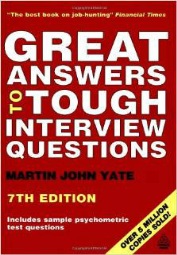
|
This book has concise content catering to the needs of interviewees on topics such as knowing the interviewer and dealing with stressful interviews. It presents real world interviewing scenarios and provides some sample answers to tackle tough questions during interviews. It also contains reminders for interviewees about graceful ways to exit the interview session – often not considered by interviewees, but affects their overall performance. The book contains the following parts which are worth reading :
| The Other Side of the Desk |
(P.177) |
| The Stress Interview |
(P.189) |
|
Welcome to the Real World |
(P.219) |
|
The Graceful Exit |
(P.229) |
|